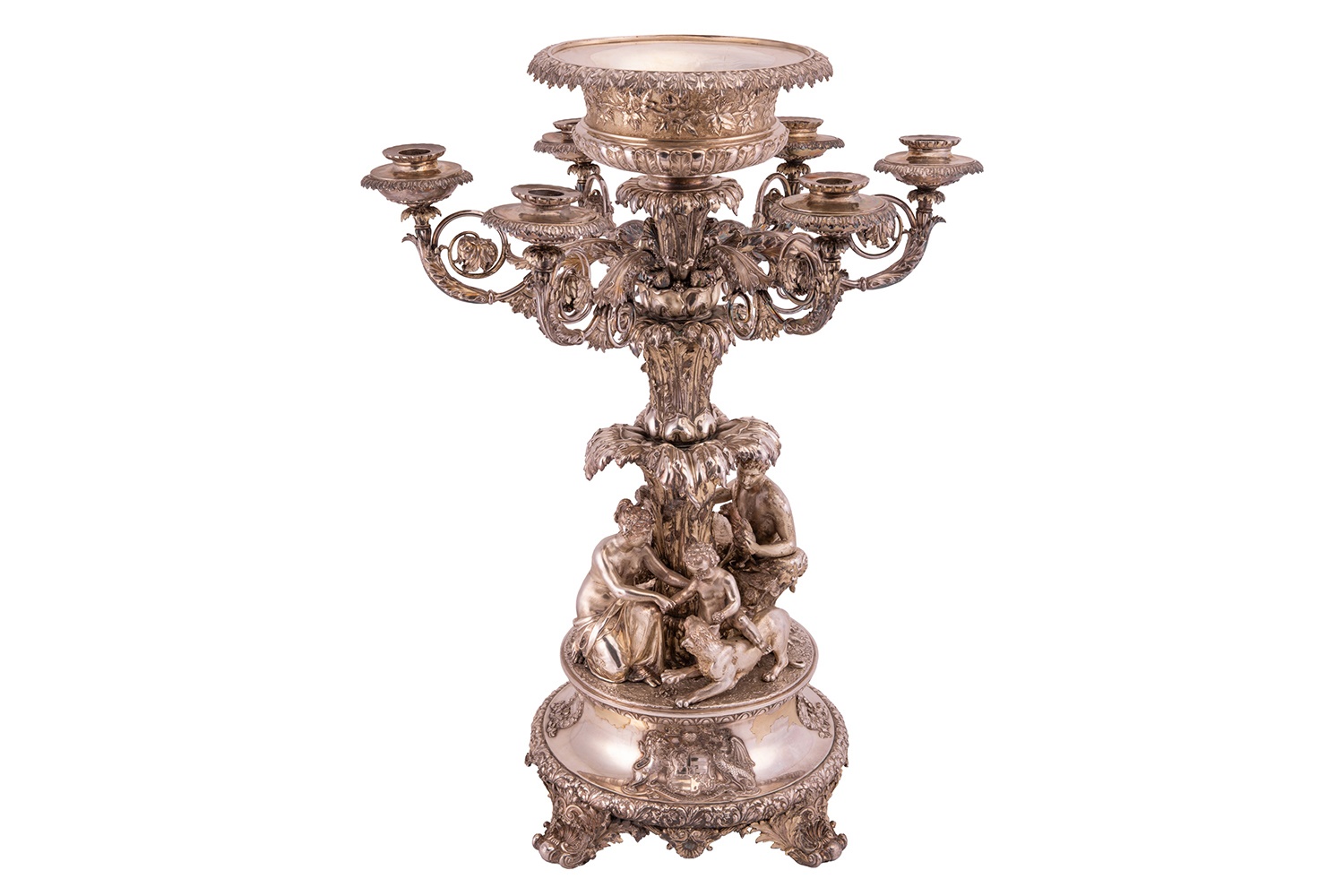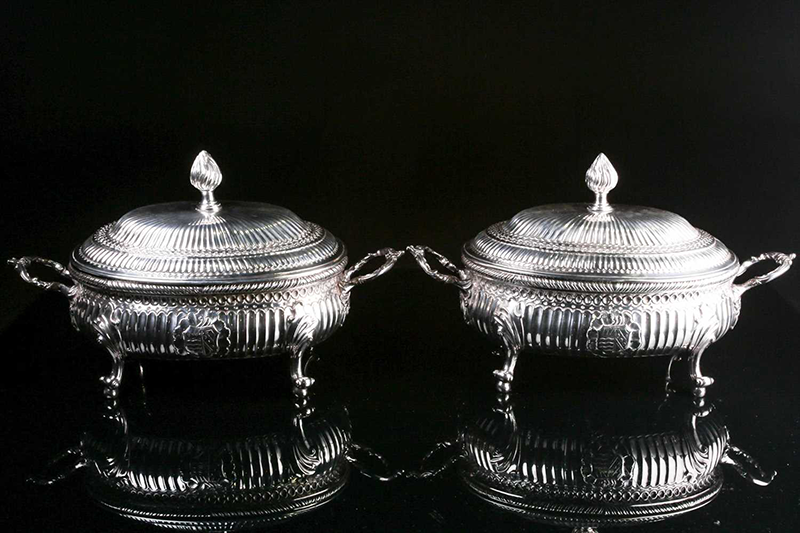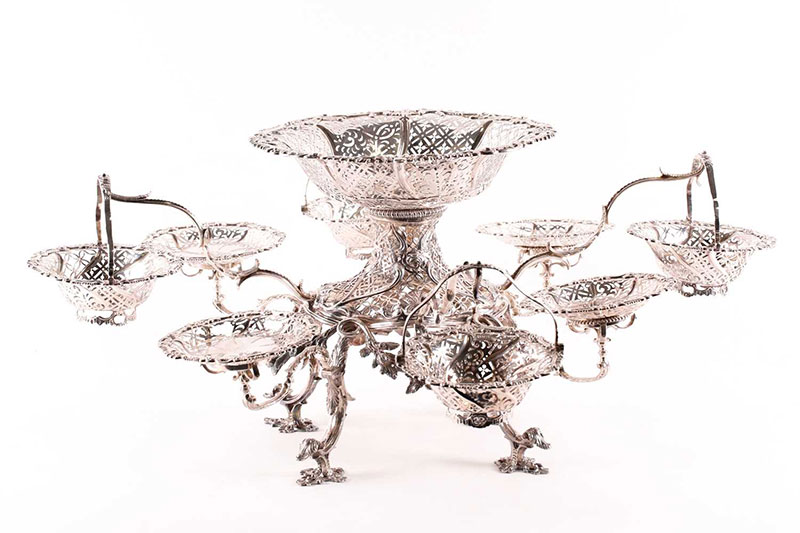How to Check Your Silver Hallmarks
In English silver the assay mark will indicate where the silver object was made
19/05/2025
Hallmarks are small, stamped marks found on silverware which can add historical detail and authenticity to the piece, ultimately determining potential value. They can include a purity mark, the maker's mark, the assay office mark, and sometimes a date letter.
Hallmarks are typically found on the underside of items like trays, teapots, and cutlery (flatware). On jewellery, they are often found on the clasp or inside the band. If you have a piece with removable elements, each should be hallmarked.
An Important George III six light candelabra centrepiece by William Bateman
Pure silver, which is 99.9% silver and above, is found in silver coins and bars, but not cutlery, jewellery, or medals. This is most commonly Sterling silver, marked as 925, which means that they are 92.5% pure silver and that 7.5% is another metal added to make the silver more durable, such as zinc, copper, or nickel. They may also be marked with a Lion Passant or walking lion to indicate English silver. English silver may also be Brittania silver which is marked with the figure of Brittania instead of the lion passant and is an alloy with copper and 95.8% pure silver. Introduced in 1697 to replace sterling silver as an obligatory standard, it was used extensively in Britain and Ireland.
The maker’s mark can affect the value of a silver item as pieces made by famous makers such as NathanialMills are highly collectable and command higher prices. A piece by Tiffany & Co, for example, will have a larger resale market than a silver object by an unknown studio – and as is the case with many American makers, their pieces will be marked Sterling.
A pair of mid 18th century Irish silver soup tureens and covers
In English silver the assay mark will indicate where the silver object was made. For instance, a leopard’s head denotes a piece that originated from London and an anchor indicates the Birmingham office. However, theseassay marks have changed over the years, and it is a good idea to consult an expert to decode the symbols.
Another hallmark of interest is the presence of a monarch’s head. This was used principally in the 18th and 19th centuries to denote the duty paid on the weight of silver. However, it is also used for commemorative purposes such as Jubilees and so must be assessed in conjunction with the other hallmarks present.
Confusingly, Continental silver has its own set of hallmarks which are not considered a guarantee of the fineness of English silver and is therefore described as ‘white metal’ rather than silver and is not as collectable as some of the English equivalents of the same piece. The same goes for silver plated items, so it is always worth checking whether your piece is silver or not.
An Irish George III silver epergne
At Dawsons, antique silver items are appraised by knowledgeable experts who understand the complexities of silver hallmarking. Our friendly team ensure that clients receive an accurate valuation based on the current market, whilst if you are looking to sell, our in-house marketing team will ensure that we secure the best possible prices for our clients.
Related Articles
Is there a Market for Antique Silver?
Where to Sell the Family Silver
How to Tell if Antique Silver is Real
Are you considering parting with any silver?
With access to a global audience of over 10 million bidders, Dawsons can secure the highest returns.
Get in touch with an expert Valuer for confidential sales advice, we would be delighted to help you:


